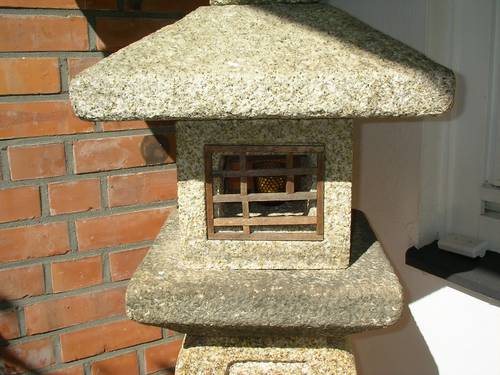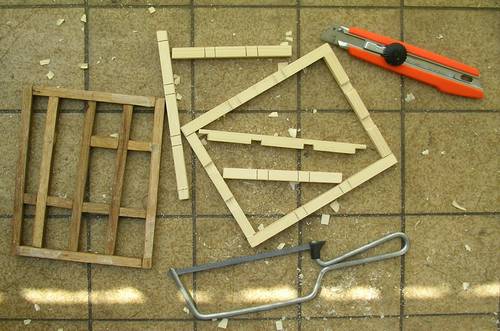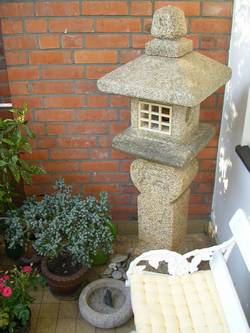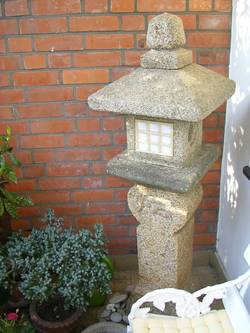Being extremely bored by writing a paper on water quality assessment guidelines, which btw is something I’d rater leave to those who get a kick out of interpreting the European Water Framework Directive and it’s applicability in order to classify water bodies in Germany, I chose something else that I had been procrastinating for the last…uhmm….20 years?
Fixing a wooden cover on a Japanese stone lantern .

These Japanese lanterns actually come without such covers, but it somehow looks better and also reminds us of the shoji, a traditional “room divider or door consisting of translucent washi paper over a wooden frame” as found in traditional Japanese architecture.

I love working with natural materials, and I sometimes think I should have chosen another path in my life. Doing an apprenticeship on carpentry, for instance, instead of learning to become an industrial manager & studies in water and soil management. Everyone can sell and work as a broker, but not everyone enjoys working with his hands. These manual jobs are a perfect retreat for those who are forced to work in an office environment, and, sad but true – I’ve seen quite a few comrades in civil engineering who could perfectly calculate the static equilibrium of a fixed end beam, but were hopelessly swamped with the simple task of hammering a nail in a perpendicular way into a wall. Obviously, such specimens of the academic world never enjoyed building their own toys during childhood .
The last time I built this wooden cover some 20 years ago, I actually didn’t give a damn about philosophy. That is: I was apparently using some fancy glue and nails. The result was and still is a horrible *thing* that used to work as the interim solution.
And now, after the Stone lantern travelled with us from Japan to Germany to Kenya and back to Germany, I thought it would be nice to eventually substitute this with something more adequately fitting the Japanese philosophy of perfectionism. Just as the Stone lantern is a piece of art, perfected into every detail, any additional cover should be made out of natural materials and proper joints such as the T halving and Cross halving as seen in the pictures.


the wooden frame + covered with paper
When darkness sets in, the candle behind the shoji (let me just call it a shoji, ok?) begins to illuminate everything and that’s exactly when the lantern is in perfect harmony with… looks good.
I sometimes wish to have a small Japanese garden somewhere.

A Japaense garden with two joshi(s) ,a swing chair or beach chair, the Kenyan sunset @ 6:00Pm in the mid January,a cool tusker, some nyama choma avec some nice kachumbari, mama mia, heaven on earth! Oh if wishes were horses!:-) I like the joshi, there is a biz idea for that mega mbeca Kyuk landscaping with joshi accent! !!!!
Thanks for the post coz am actually tryna get ideas for my small back courtyard and only a few things can work, like that shoji lantern looks like something to consider!
Oh, by the way I dropped a link to your blogpage on mine.